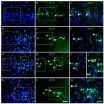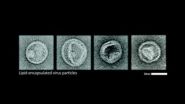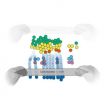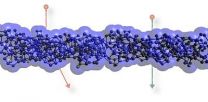(Press-News.org) To help rein in massive health care spending, a new RAND study concludes that U.S. policy makers should urgently find ways to incentivize pharmaceutical companies and device makers to develop products that produce more value.
Instead of examining existing medical technologies and their use, a new study suggests the study identifies options to affect what drugs and medical devices get created in the first place. The aim is to help reduce health care spending with as little loss of health as possible and to ensure that costlier advances have large enough health benefits to justify their added expense. Doing so may require many complementary and some novel approaches.
"We spend more than $2 trillion a year on health care in the U.S. -- more per capita than any other nation -- and the financial incentives for innovators, investors, physicians, hospitals and patients often lead to decisions that increase spending with little payback in terms of health improvement," said Steven Garber, lead author of the study and a senior economist at RAND, a nonprofit research organization.
To help reduce invention costs, the study recommends that the National Institutes for Health -- the federal agency that is the major funder of basic biomedical research -- encourage more creativity and risk-taking to promote major scientific breakthroughs.
The researchers also suggest that rewards for helpful inventions could be increased by offering prizes, buying out patents and creating a public-interest investment fund. Shared savings from the Medicare program, which involves more than $500 billion in spending each year, could provide much of the required money and induce top private investors to participate in the public-interest investment fund to help select the most promising ideas for investment.
The researchers said drugs and devices that would help decrease spending could receive expedited, but still rigorous, review from the federal Food and Drug Administration to enable safe and effective products to generate U.S. sales sooner.
Other options include encouraging wider use of drugs and devices that would help decrease spending and limit use of products that increase spending without commensurate health improvements.
With Medicare, the Centers for Medicare & Medicaid Services are not allowed by law to consider costs in its coverage policies; changing the law could open up opportunities to save money in the short run and improve innovators' incentives in the long run.
For example, processes to determine Medicare coverage and payment rates could be changed to favor technologies that would help save money. Further, the agency could expand its "coverage with evidence process," requiring as a condition for continued coverage of a product stronger evidence regarding its effectiveness. Medicare also could stop covering off-label use of costly cancer drugs in clinical circumstance where there is little or no evidence of effectiveness, the study says.
The forms of payment by Medicare and private-sector payers could be altered to put providers at greater financial risk -- for example, by decreasing fee-for-service payment, which rewards physicians for doing more regardless of likely health benefits, and increasing use of bundled and capitated payments under which providers bear additional costs.
Another promising approach is requiring patients to pay less out of pocket for services likely to help them and to pay more for services unlikely to do so. Because it can be hard to know which patients will benefit from which services, the researchers suggest that policymakers encourage development of more information in this area through more, and more timely, health technology assessments.
The researchers said there is urgency in making tough choices because failing to do so only delays establishment of stronger incentives for inventors to find ways to save money. Delay means more money will be spent on health care that isn't worth its costs and it will take even longer to rein in U.S. health care spending.
INFORMATION:
Support for the study was provided by the Bill & Melinda Gates Foundation. The study, "Redirecting Innovation to Decrease Spending and Increase Value in U.S. Health Care," can be found at http://www.rand.org.
Other authors of the report are Susan M. Gates, Emmett B. Keeler, Mary E. Vaiana, Andrew W. Mulcahy, Christopher Lau, and Arthur M. Kellermann. The views expressed do not necessarily represent those of Kellermann's current employer, the Uniformed Services University of the Health Sciences or the Department of Defense.
RAND Health is the nation's largest independent health policy research program, with a broad research portfolio that focuses on health care costs, quality and public health preparedness, among other topics.
US medical innovation needs smarter incentives to cut health spending, study finds
2014-04-22
ELSE PRESS RELEASES FROM THIS DATE:
NREL unlocking secrets of new solar material
2014-04-22
A new solar material that has the same crystal structure as a mineral first found in the Ural Mountains in 1839 is shooting up the efficiency charts faster than almost anything researchers have seen before—and it is generating optimism that a less expensive way of using sunlight to generate electricity may be in our planet's future.
Researchers at the Energy Department's National Renewable Energy Laboratory (NREL) are analyzing the new material, perovskite, using the lab's unique testing capabilities and broad spectrum of expertise to uncover the secrets and potential ...
Commonly available blood-pressure medication prevents epilepsy after severe brain injury
2014-04-22
Between 10 and 20 percent of all cases of epilepsy result from severe head injury, but a new drug promises to prevent post-traumatic seizures and may forestall further brain damage caused by seizures in those who already have epilepsy.
A team of researchers from the University of California, Berkeley, Ben-Gurion University in Israel and Charité-University Medicine in Germany reports in the current issue of the journal Annals of Neurology that a commonly used hypertension drug prevents a majority of cases of post-traumatic epilepsy in a rodent model of the disease. If ...
Short-term environmental enrichment exposure induces maturity of newborn neurons
2014-04-22
Many studies have shown that exposure to environmental enrichment can induce neurogenesis of the hippocampal region, thus improving learning and memory. Previous studies have demonstrated that doublecortin-positive immature neurons exist predominantly in the superficial layer of the cerebral cortex of adult mammals such as guinea pigs, and these neurons exhibit very weak properties of self-proliferation during adulthood under physiological conditions. Whether environmental enrichment has an impact on the proliferation and maturation of these immature neurons in the prefrontal ...
Like a hall of mirrors, nanostructures trap photons inside ultrathin solar cells
2014-04-22
In the quest to make sun power more competitive, researchers are designing ultrathin solar cells that cut material costs. At the same time they're keeping these thin cells efficient by sculpting their surfaces with photovoltaic nanostructures that behave like a molecular hall of mirrors.
"We want to make sure light spends more quality time inside a solar cell," said Mark Brongersma, a professor of materials science and engineering at Stanford and co-author of a review article in Nature Materials.
Brongersma and two Stanford colleagues -- associate professor of materials ...
Grasp of SQUIDs dynamics facilitates eavesdropping
2014-04-22
Theoretical physicists are currently exploring the dynamics of a very unusual kind of device called a SQUID. This Superconducting Quantum Interference Device is a highly sensitive magnetometer used to measure extremely subtle magnetic fields. It is made of two thin regions of insulating material that separate two superconductors – referred to as Josephson junctions – placed in parallel into a ring of superconducting material. In a study published in EPJ B, US scientists have focused on finding an analytical approximation to the theoretical equations that govern the dynamics ...
Cloaked DNA nanodevices survive pilot mission
2014-04-22
VIDEO:
Wyss Institute Core Faculty member William Shih and Technology Development Fellow Steven Perrault explain why DNA nanodevices need protection inside the body and how a virus-inspired strategy helps protect them....
Click here for more information.
It's a familiar trope in science fiction: In enemy territory, activate your cloaking device. And real-world viruses use similar tactics to make themselves invisible to the immune system. Now scientists at Harvard's Wyss Institute ...
Carnegie Mellon system lets iPad users explore data with their fingers
2014-04-22
PITTSBURGH—Spreadsheets may have been the original killer app for personal computers, but data tables don't play to the strengths of multi-touch devices such as tablets. So researchers at Carnegie Mellon University have developed a visualization approach that allows people to explore complex data with their fingers.
Called Kinetica, this proof-of-concept system for the Apple iPad converts tabular data, such as Excel spreadsheets, so that data points appear as colored spheres on the touchscreen. People can directly manipulate this data, using natural gestures to sort, ...
Child's autism risk accelerates with mother's age over 30
2014-04-22
PHILADELPHIA (April 22, 2014) – Older parents are more likely to have a child who develops an autism spectrum disorder (ASD) than are younger parents. A recent study from researchers from the Drexel University School of Public Health in Philadelphia and Karolinska Institute in Sweden provides more insight into how the risk associated with parental age varies between mothers' and fathers' ages, and found that the risk of having a child with both ASD and intellectual disability is larger for older parents.
In the study, published in the February 2014 issue of the International ...
Nanomaterial outsmarts ions
2014-04-22
Ions are an essential tool in chip manufacturing, but these electrically charged atoms can also be used to produce nano-sieves with homogeneously distributed pores. A particularly large number of electrons, however, must be removed from the atoms for this purpose. Such highly charged ions either lose a surprisingly large amount of energy or almost no energy at all as they pass through a membrane that measures merely one nanometer in thickness. Researchers from the Helmholtz-Zentrum Dresden-Rossendorf (HZDR) and Vienna University of Technology (TU Wien) report in the scientific ...
Gym culture likened to McDonalds
2014-04-22
Visit a typical gym and you will encounter a highly standardised notion of what the human body should look like and how much it should weigh. This strictly controlled body ideal is spread across the world by large actors in the fitness industry.
A new study explores how the fitness industry in many ways resembles that of fast food. One of the authors is from the University of Gothenburg.
McDonaldisation of the gym culture is the theme of an article published in Sports, Education and Society, where Thomas Johansson, professor at the University of Gothenburg, together ...






